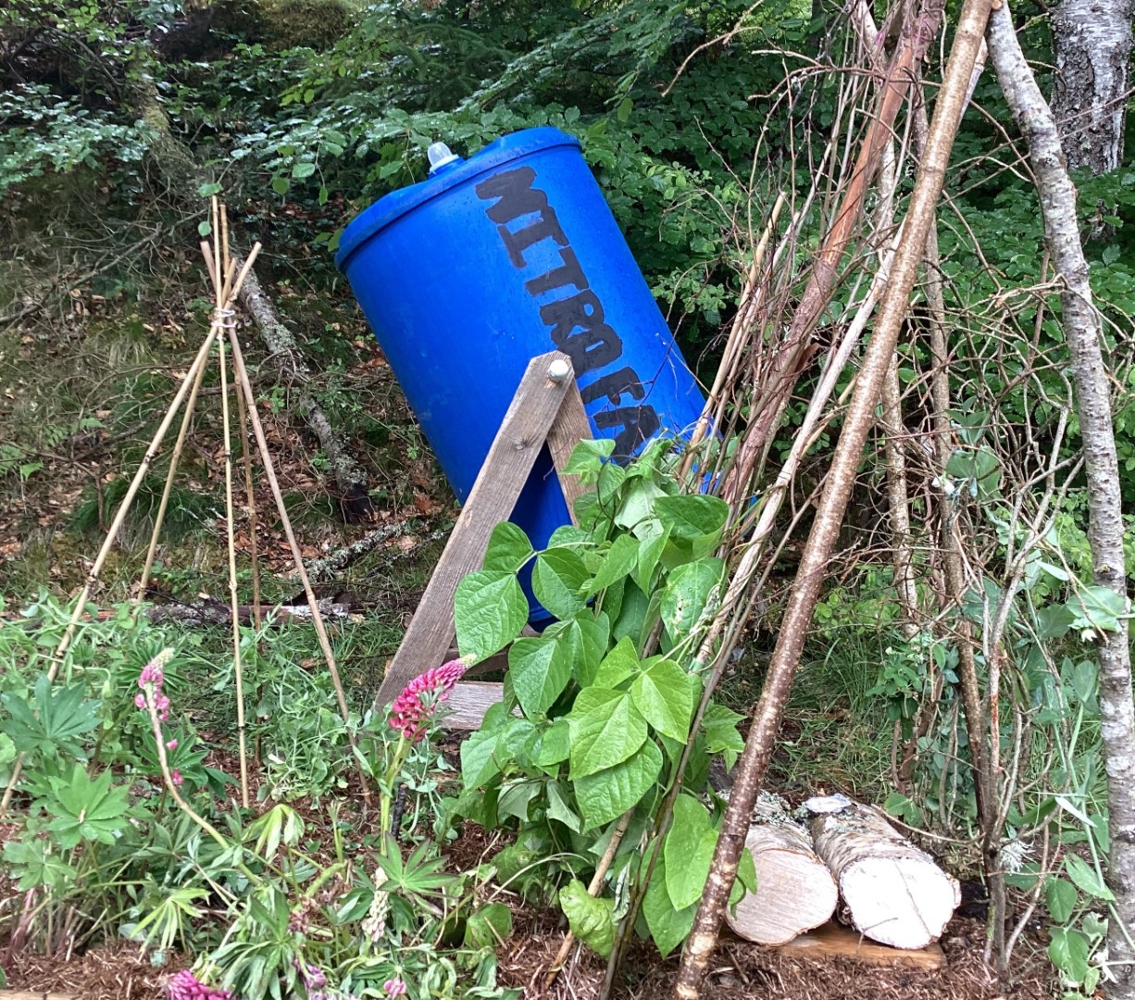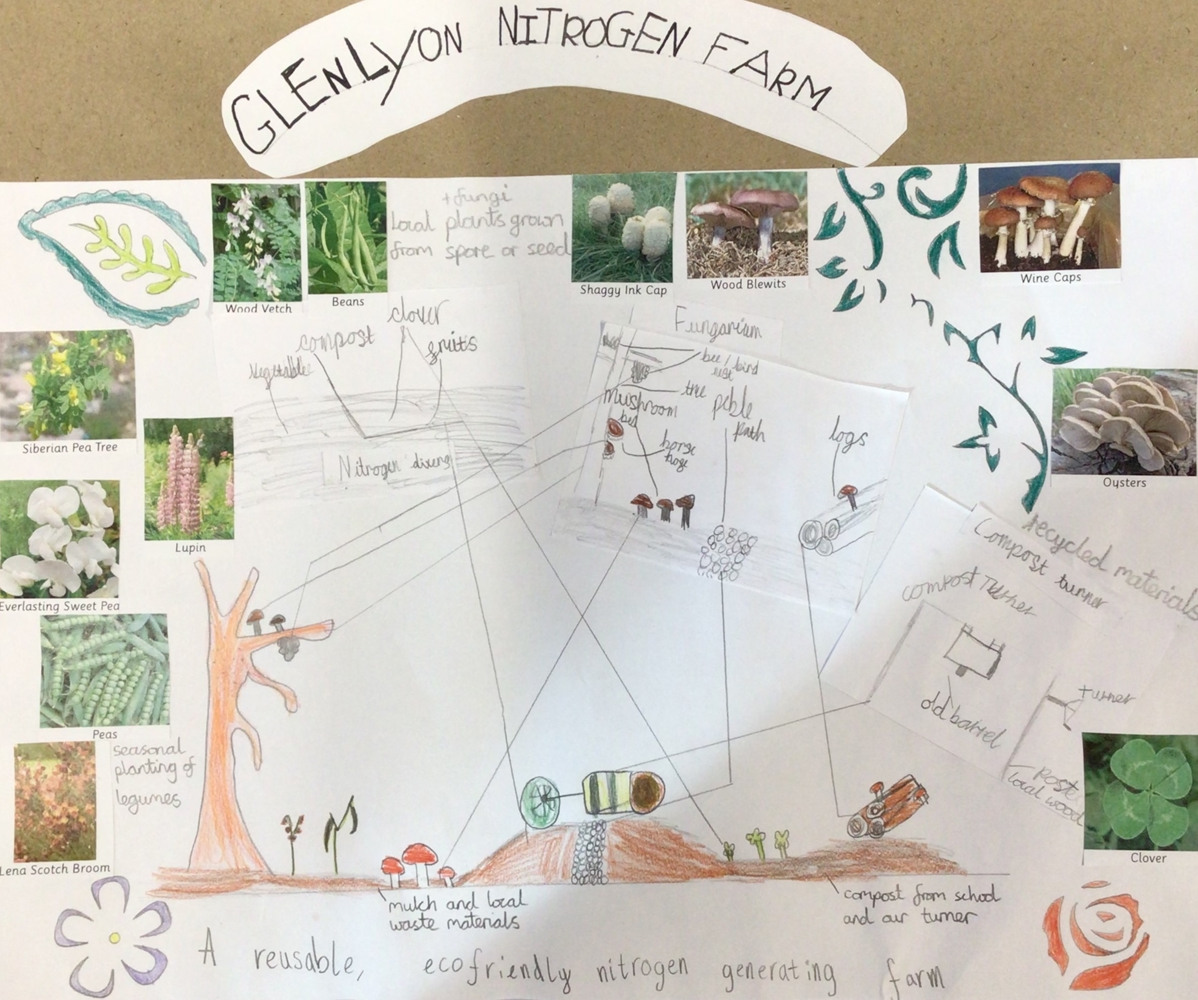Glenlyon Primary, pupils in P4 - 7 Nitrogen Farm
Glenlyon Primary, pupils in P4 - 7 Nitrogen Farm

Our garden focuses on the engineers underground that are so crucial to life on this planet, both 1) the fungi that connect and construct beneath the soil and 2) the roots of legumes with their nitrogen fixing bits. Together they are fundamental in creating a rich and healthy soil (and compost).
During the project we learned a lot about nitrogen which is a key part for healthy soils to grow plants and we also found out loads about fungi and it’s uses to us and the whole environment, particularly plants and trees, from communication to feeding and nutrition.
Our favourite parts of the design was making the compost tumbler because it involved woodworking and problem solving, and planting the seeds and plants that are going to make this soil the best! Our community all came together to help find various crucial elements of the garden (large container for the compost tumbler, organic straw, woodchipping, timber for the frames and some local chicken poo to get our tumbler started!)
We first met up with an expert on fungi, Duncan Pepper, who gave us a talk on the roles of fungi and nitrogen fixers and then a fungi hunt in the forest around our school. It inspired our project and we worked really hard on designing a tumbler composter to support the pocket garden and our whole garden going forward.
We used shitake mushroom plugs to infiltrate some recently fallen trees – helpfully cut into pocket sized logs by some of our parents on the local estate, which are going to take a time to grow!
Planting focused on those plants that help put nutrients back into the soil – beans, peas, sweetpeas – but we were also wanting to support wildlife, so the lupins and clover were in, especially to give pollinators a source of food. The main things that are edible in our garden are beans and peas and the shitake mushrooms.
Our largest challenge with this was that our fungi needed a fairly shaded spot, while the legumes mainly wanted as much sun as they could get, so the framing of the garden needed to be carefully made to work for both. We are still not sure if we got that quite right.
The hope is that after the plants have died back they will rot down into the soil and the nitrogen that has been generated will make for an even better planting site in years to come. We might look at planting with the Inuit Three Sister’s Method (beans, sweetcorn and pumpkin/squash) which we learnt about during our project, but weren’t in time for sowing and planting this year.


